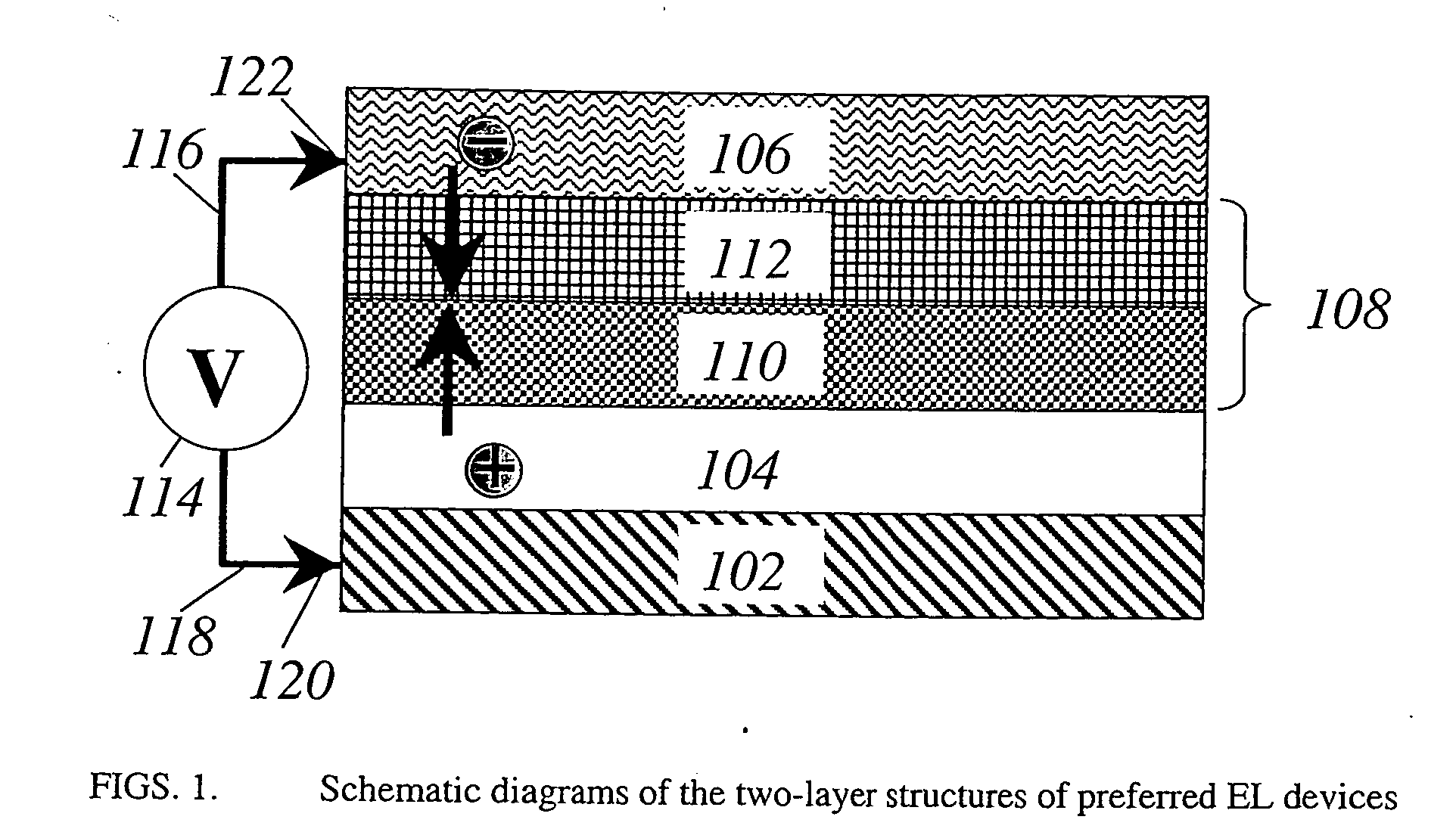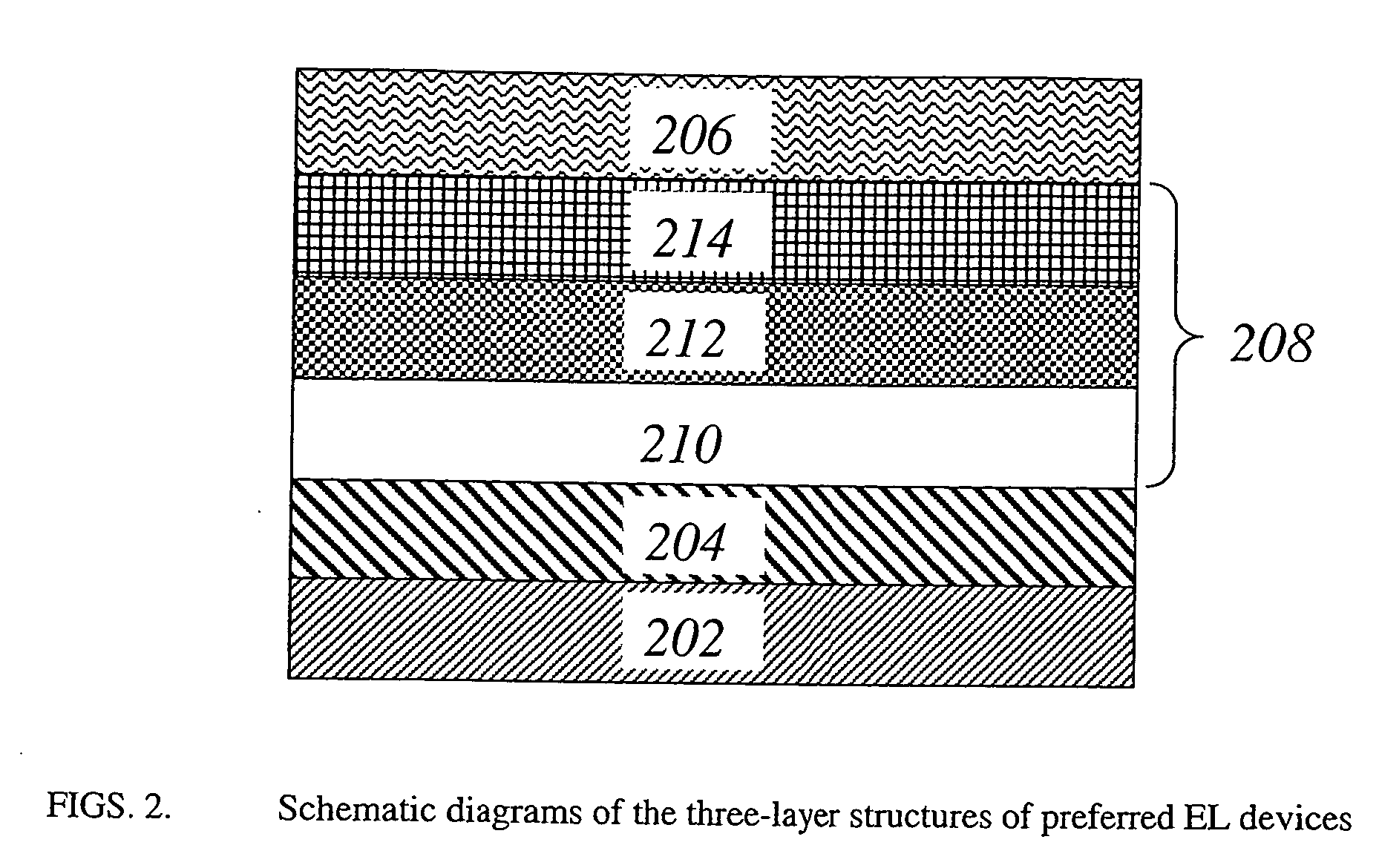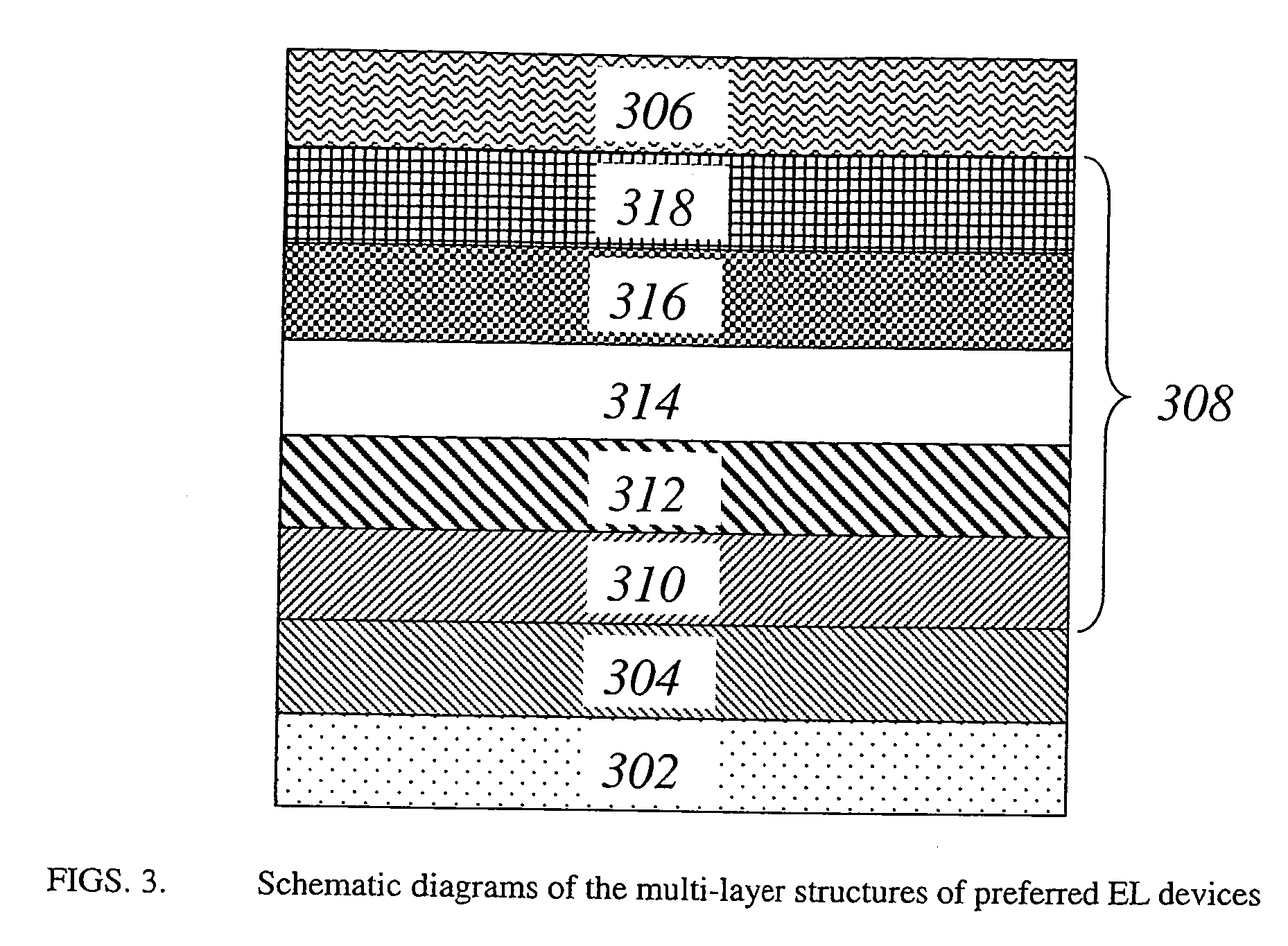Organic luminescent materials
a luminescent material and organic technology, applied in the field of organic luminescent materials, can solve the problems of low luminescence efficiency of these el devices, long operation stability, bright blue emission, etc., and achieve the effect of high luminescence efficiency
- Summary
- Abstract
- Description
- Claims
- Application Information
AI Technical Summary
Benefits of technology
Problems solved by technology
Method used
Image
Examples
example 1
Synthesis of 4,10-Dipheny-dibenzo[def,mno]chrysene-6,12-dione (Dione 1)
[0243] To a 3 L of three neck flask were charged with 300 g (0.065 mol.) of 4,10-Dibromo-dibenzo[def,mno]chrysene-6,12-dione, 17.8 g (0.146 mol.) of phenyl boronic acid, and 0.2 g of 18-c-6 in a mixture of 1200 mL of toluene, 300 mL of ethanol, and 250 mL of 2.0 N potassium carbonate. After mixture was bubbled with house nitrogen for 15 min, 0.3 g of Pd (PPh3)4 was added to the reaction mixture under nitrogen. Then the reaction mixture was heated to reflux with efficient stirring under nitrogen protection. After the reaction proceeded for three hours, 0.2 g of Pd (PPh3)4 was added to the reaction mixture under nitrogen. The reaction mixture was continued to reflux for overnight. The newly formed orange solid was suspended in organic layer. After cool the reaction mixture to room temperature, the water phase was separated. The organic layer (with newly formed orange solid was suspended) was washed with water for ...
example 2
Synthesis of 4,10-Bis-(4-tert-butyl-phenyl)-dibenzo[def,mno]chrysene-6,12-dione (Dione 2)
[0244] Dione 2 was prepared by similar procedure described in Example 1. Yield is in 95.7%.
example 3
Synthesis of 4,10-Bis-(4-trimethylsilylphenyl)-dibenzo[def,mno]chrysene-6,12-dione (Dione 3)
[0245] Dione 3 was prepared by similar procedure described in Example 1. Yield is in 92.5%.
Synthesis of 4,10-diaryl-dibenzo[def,mno]chrysene
[0246]
[0247] The synthesis of 4,10-diaryl-dibenzo[def,mno]chrysene was illustrated by following detailed preparation procedure of 4,10-Diphenyl-dibenzo[def,mno]chrysene. (B-39). The B-40 and B-41 were prepared under similar general conditions.
PUM
| Property | Measurement | Unit |
|---|---|---|
| thickness | aaaaa | aaaaa |
| thickness | aaaaa | aaaaa |
| drive current density | aaaaa | aaaaa |
Abstract
Description
Claims
Application Information
 Login to View More
Login to View More - R&D
- Intellectual Property
- Life Sciences
- Materials
- Tech Scout
- Unparalleled Data Quality
- Higher Quality Content
- 60% Fewer Hallucinations
Browse by: Latest US Patents, China's latest patents, Technical Efficacy Thesaurus, Application Domain, Technology Topic, Popular Technical Reports.
© 2025 PatSnap. All rights reserved.Legal|Privacy policy|Modern Slavery Act Transparency Statement|Sitemap|About US| Contact US: help@patsnap.com



